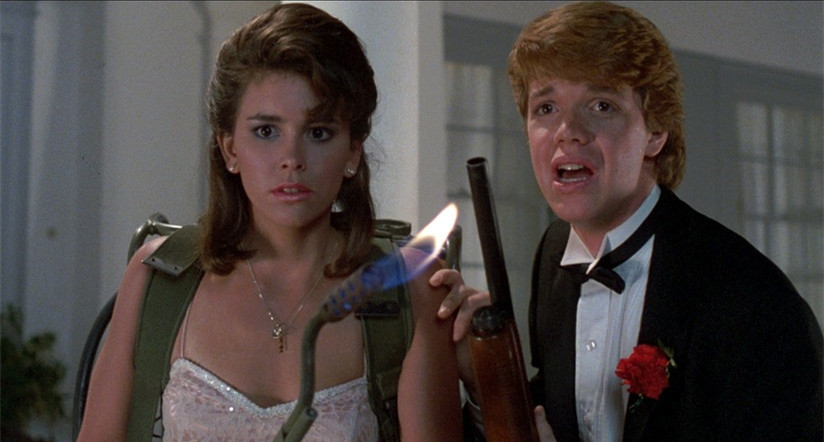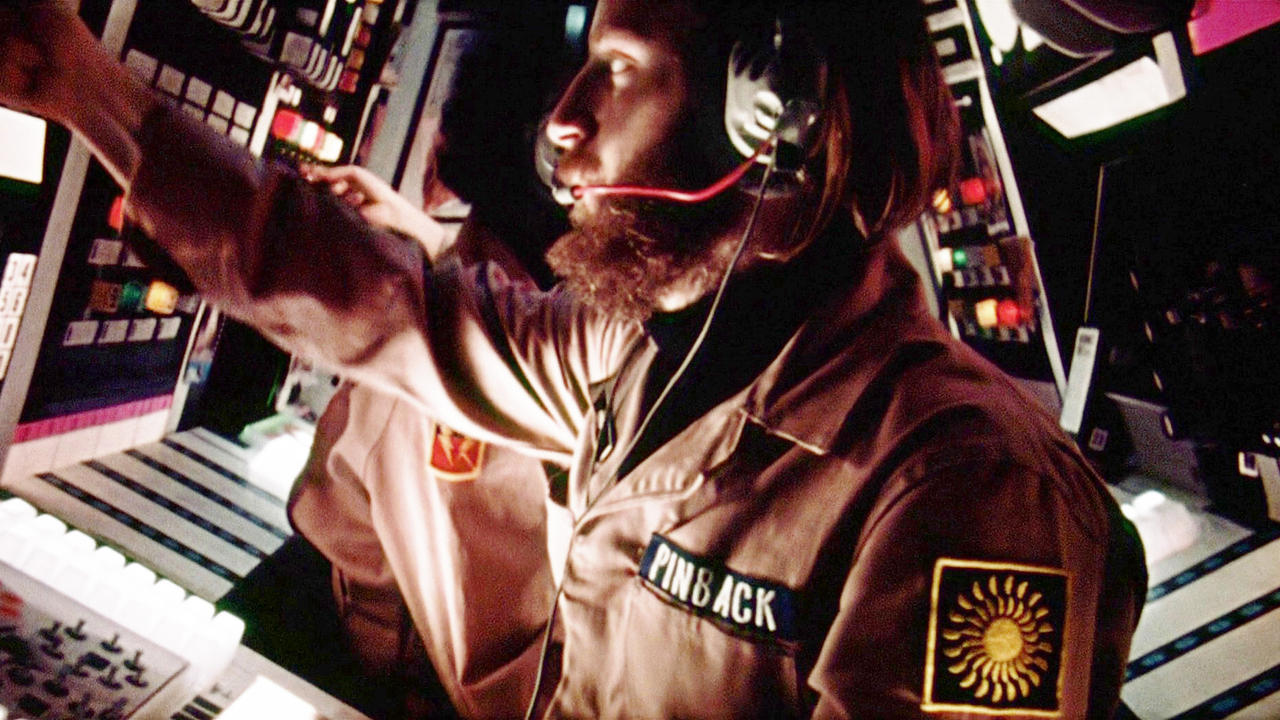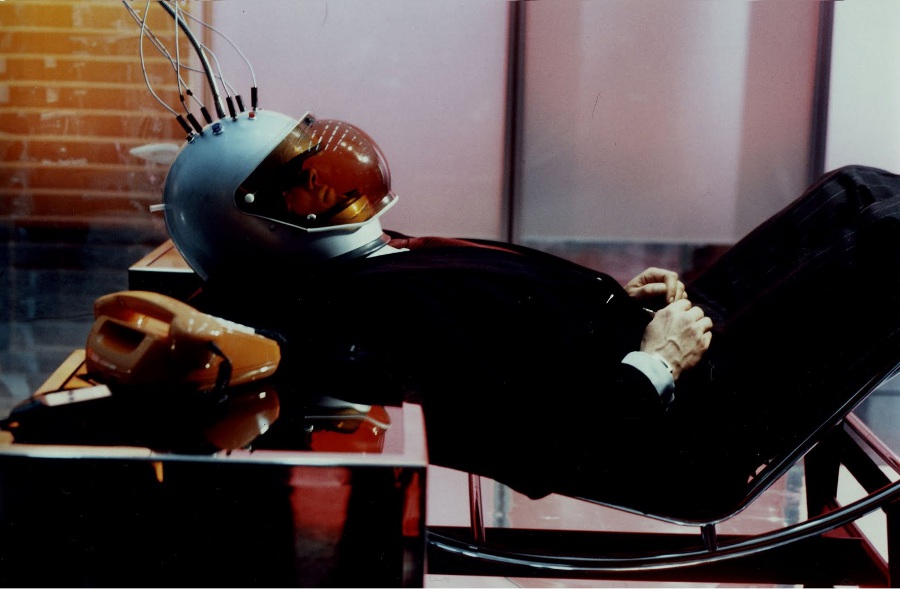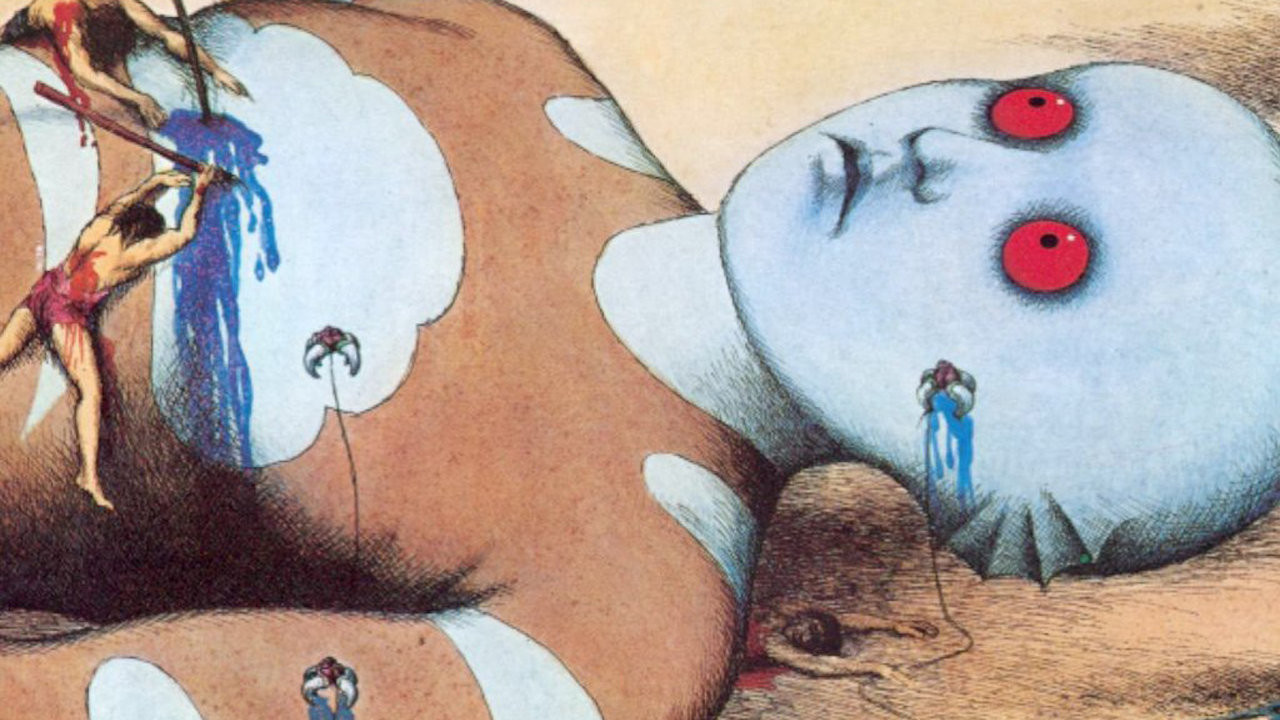5. Night of the Creeps (1986)

Writer-director Fred Dekker, who had already established a beachhead with smart horror comedy fans having written 1986’s House (he was still a year away from his cult classic The Monster Squad), further endeared himself to genre adherents with his campy B-movie homage, the audacious Night of the Creeps.
With a main plot occupying itself with zombies on a college campus, heroic doses of alien invasion films and sadistic slashers also vie for room as a pair nerdy fraternity pledges (Jason Lively, Steve Marshall) regrettably agree to pull an over-the-top prank involving a frozen cadaver. Not only does the plan malfunction, the hapless duo let loose slug-like creatures on the quad, amidst undulating co-eds, sexualy frustrated fratboys, and sorority soirées.
As ghoulishly goofy as Night of the Creeps is, it’s also a pretty genius artifact of 1980s pop lunacy. A wealth of one-liners also ups the pleasure factor here, and my favorite zinger has got to be the deadpan from Detective Ray Cameron (Tom Atkins) when he blurts out: “I got good news and bad news, girls; the good news is your dates are here, the bad news is they’re dead.”
4. The Visitor (1979)

Italian director Giulio Paradisi took a midnight movie approach to The Visitor, a grab-bag genre film that weds elements of sci-fi, horror, and hokum with largely satisfying and overtly silly results.
Perhaps a good place to start when mentioning The Visitor is its large ensemble cast, bafflingly assembled and giving it an honest go, includes Glenn Ford, Lance Henriksen, Franco Nero, legendary director Sam Peckinpah, and Shelley Winters.
Why Paradisi summoned so skillful a lineup of stars is unclear, especially considering that they service a trite and gleefully OTT story that rips off plot elements from The Birds, The Exorcist, Close Encounters of the Third Kind, Star Wars, and more, resulting in a weirdly compelling, regularly nonsensical, yet fearlessly fascinating B-movie spectacle.
Fans of Dario Argento and Lucio Fulci will appreciate fellow countryman Paradisi’s strange approach to action set pieces, production design, and freakout mayhem, and the story about an intergalactic traveler with a Christ complex, while never easy to follow, is a hoot. Perfect for party viewing, The Visitor doesn’t outstay its welcome, and connoisseurs of cult films and sci-fi oddities will take particular delight.
3. Dark Star (1974)

John Carpenter’s first flight as filmmaker –– co-written with Dan O’Bannon (Alien), who also stars –– is a consistently clever black comedy set in space. Marred somewhat by uneven acting and a miniscule budget, Dark Star nevertheless delivers some stylish smarts, more than a few guffaws, and enough stinging satire to secure it the fan devotion which it sincerely deserves. It’s a testament to Carpenter’s creativity that so much on screen stems from so little.
A shoestring of around $60, 000 is used to maximum effect for a story set entirely in outer space, aboard the eponymous starship “Dark Star” in the mid 22nd century. The ship’s mission is to obliterate via AI-powered nuclear incendiary devices, unstable planets that could endanger human colonies.
The ragtag crew are an odd assortment of surfers, hippies, and eccentrics, not to mention the ship’s mascot, an alien lifeform that looks little more than a beach ball. Okay, I’ve seen the movie several times and I’m fairly certain that it IS in fact a beach ball.
Fans of the BBC’s cult sci-fi TV sitcom Red Dwarf should note that that show’s creator, Doug Naylor, credits Dark Star as his inspiration for the series, so how cool is that? Add into the mix Carpenter’s very first synth-driven score and you’re left with a genre spoof that delights in strangeness and technology running amok. An impressive and often overlooked debut.
2. World on a Wire (1973)

The late, great, wunderkind Rainer Werner Fassbinder’s mind-blowing World on a Wire, a nearly forgotten two-part mini-series about a man who unjustly or not, assumes control of a massive alternate reality simulation after his predecessor bites it in a mysterious accident, anticipated The Matrix by a solid 20 years.
Smartly adapted from Daniel F. Galouye’s 1964 sci-fi novel “Simulacron-3”, World on a Wire is Fassbinder at the height of his impressive powers as the viewer is plunged into a virtual world peopled with “identity units” who believe themselves to be human.
Teeming with the director’s much copied and always incredible zoom shots as well as futurist chic set designs and pop art cult effrontery akin to Jean-Luc Godard’s Alphaville (1965) as well as mindfuckery and satisfying twists that certainly influenced recent SF pop masterworks such as Alex Garland’s Ex Machina (2014) and Denis Villeneuve’s Blade Runner 2049 (2017).
Unraveling on two levels of reality, the virtual and the real, World on a Wire is certainly a product of the post-Watergate, paranoiac 1970s, and has a lot of the cynicism of the best films from that era.
As Time Out film scribe Jonathan Rothkopf points out, “…the vibe here is close to those cryptic, blue-ish mysteries that David Cronenberg used to make in Canada with people running around in lab coats. Yes, that equals awesome… Never mind how inconceivable it is that busy Fassbinder took time between his two crowning provocations, The Bitter Tears of Petra von Kant (1972) and Ali: Fear Eats the Soul (1974), to make a three-and-a-half-hour sci-fi sizzler for German TV. Let’s just be thankful he did.”
Like we needed another reason to worship at the altar of R.W. Fassbinder, a man for whom contemporary cinema and the current wave of prestige television owe so much. Prost!
1. Fantastic Planet (1973)

Will there ever be another full-length animated feature quite as wonderfully weird and endlessly imaginative as René Laloux’s underground French classic Fantastic Planet?
Overrunning with warm pastel colors and delicate, sharply detailed drawings, Fantastic Planet is an influential mindfuck, make no mistake. Adapted from Stefan Wul’s pulpy 1957 French sci-fi novel “Oms en série”, Fantastic Planet is an allegorical odyssey, one that embraces psychedelic visuals, originally inspired by Russia’s invasion of Czechoslovakia.
Set on the planet Ygam where there exists a race of blue-skinned giants, Traags, who keep a human like race, Oms, as pets. Alternately surreal, deeply eerie, high-flown, and frightening, Fantastic Planet is a nagging, nostalgic, and often disconcerting epic of animation that is as original as it is monumental. Deserving of the 1973 Cannes Grand Prix Prize, midnight movies are seldom this observant, imaginative, and mind-blowing.
“[Fantastic Planet] is a sci-fi starter drug that turned many a budding fan on to Stanislaw Lem, Tarkovsky flicks, and old-school Heavy Metal comics,” wrote Village Voice film critic Gary Dauphin, who also suggested that “…it’s not every fancifully encoded cautionary tale that can survive the demise of its historical villains, and it’s not every stoner midnight movie that can stand a second viewing in the sober light of day.”
The prog-rock meets psychedelic jazz score by Alain Goraguer, which has been sampled steadily and with respect from the hip-hop community, gives the film even more street cred (though truly it was never lacking such distinctions).
Perhaps the greatest strengths for the film lie in the melding of Roland Topor’s outlandish designs, which work so well with character designer Josef Kábrt and background designer Josef Váňa’s bizarre, beautiful, and bold conceptions.
Like the art itself, what unfolds on this alien world often seems hyper-real and also at times, entirely unreal. But this strange cosmology is invariably consistent with the exhilarated vision of Laloux and Topor. And what a graceful, jarring, and genuinely weird fairytale vision it is.
Author Bio: Shane Scott-Travis is a film critic, screenwriter, comic book author/illustrator and cineaste. Currently residing in Vancouver, Canada, Shane can often be found at the cinema, the dog park, or off in a corner someplace, paraphrasing Groucho Marx. Follow Shane on Twitter @ShaneScottravis.